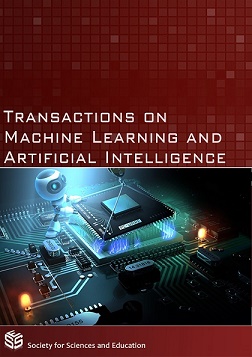Urban Flood Forecast using Machine Learning on Real Time Sensor Data
DOI:
https://doi.org/10.14738/tmlai.55.3552Keywords:
Urban Flooding, Flood Forecasting, Machine Learning, Real time Machine Learning.Abstract
All the underpasses, flyovers and drainage networks in the urban areas are designed to manage a maximum rainfall. This situation implies an accepted flood risk for any greater rainfall event. This threat is very often underestimated as components such as climate change is disregarded. But even great structural alterations cannot assure that urban flood control precautions would be able to cope with all future rainfall events. Hence, being readily able to forecast city or urban floods in real time is one of the main tasks of this forecast. The current Urban flood forecasting methods involve the use of Geographical Information Systems techniques. Even though, these systems allow to detect and model the flood patterns in a larger perspective. They cannot pin point precise location behavior. Machine Learning models in conjunction with a sensor network can be essential elements of urban flood forecast systems, as an active part of the system or as study tools. The paper goes into the application of machine learning models to better predict flood pattern based on several external factors in real time.
References
(1) Real-time urban flood forecasting and modelling – a state of the art Justine Henonin, Beniamino Russo, Ole Mark, Philippe Gourbesville Journal of Hydroinformatics Jul 2013, 15 (3) 717-736;
(2) Peter, Lamovec, Mikoš Matjaž, and Oštir Krištof. "Detection of flooded areas using machine learning techniques: Case study of the Ljubljana moor floods in 2010." Disaster Advances 6.7 (2013): 4-11.
(3) Gupta, Anil K., and Sreeja S. Nair. "Urban floods in Bangalore and Chennai: risk management challenges and lessons for sustainable urban ecology." Current Science (2011): 1638-1645.
(4) Ramaswamy, Bhakthavathsalam. "An Intelligent Wireless Modular System for Effective Disaster Management." Transactions on Networks and Communications 4.3 (2016): 22.
(5) Nicholls, N. "A possible method for predicting seasonal tropical cyclone activity in the Australian region." Monthly Weather Review 107.9 (1979): 1221-1224.
(6) Martínez, Aleix M., and Avinash C. Kak. "Pca versus lda." IEEE transactions on pattern analysis and machine intelligence 23.2 (2001): 228-233.
(7) Rao, R. C. (1948). "The utilization of multiple measurements in problems of biological classification". Journal of the Royal Statistical Society, Series B. 10 (2): 159–203. JSTOR 2983775.
(8) Hofmann, Thomas; Scholkopf, Bernhard; Smola, Alexander J. (2008). "Kernel Methods in Machine Learning".
(9) Altman, N. S. (1992). "An introduction to kernel and nearest-
neighbor nonparametric regression". The American Statistician. 46 (3): 175–185.
(10) Rokach, Lior; Maimon, O. (2008). Data mining with decision trees: theory and applications. World Scientific Pub Co Inc. ISBN 978-9812771711.
(11) Ho, Tin Kam (1995). Random Decision Forests (PDF). Proceedings of the 3rd International Conference on Document Analysis and Recognition, Montreal, QC,
–16 August 1995. pp. 278–282.






